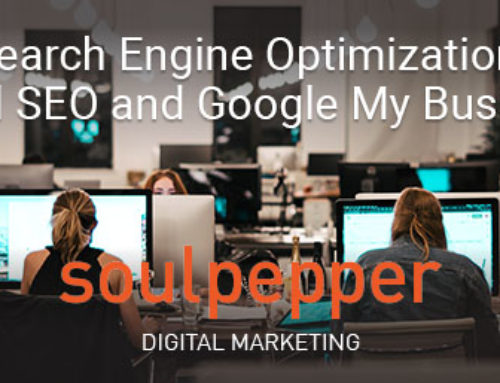You had a website platform that carried you for years but now it can’t handle the size of your business. Just like you’d change offices because you need bigger space, you need to move to a more robust platform. Despite what you may have been told, the challenge isn’t moving the actual site at all. It’s how you can migrate without losing all your history, weight and organic traffic.
Just like you have to get new office furniture, get hydro set up and redo your insurance policies when you move offices, you have to do all that for a website as well. So how can you transition your online play without losing traffic and impacting customers? Develop an effective Site Migration Strategy that begins the minute you decide to build a new website.
Making a seamless transition
The goal in undertaking a physical office move is to make the transition as seamless as possible without any interruptions to operations, sales and staff. It’s no different online. You need to migrate without losing any traffic or disrupting the customer experience. So how do you ensure it’s a seamless experience? Invest in a Site Migration specialist.
What your developer doesn’t know can hurt you
Most companies will engage a website developer or agency to make the platform switch over but they never consider the actual site migration strategy itself. Why? They don’t know about it. And developers don’t think about it. So how can you ensure the transition to your new website is done in a such a way that you’re not going to lose anything that you’ve built up? I’m glad you asked.
Keeping Google Happy
Google doesn’t like when pages change. It likes history. It trusts history. If a domain has been there for 10 years, then Google knows the domain is trustworthy, and the traffic going to that domain adds to that level of credibility. But when you decide to move the whole thing to a brand new domain, you need to realize that Google hasn’t even had a chance to index it. So you start over again at zero. And the time it takes to build back your “legitimacy” with Google is costing you money in lost revenues, simply because you are not being found. When you migrate sites, it’s crucial you take all of your history and weight with you. This is what ultimately helps you keep all of your traffic and sales.
Even the big players don’t get it
We were asked to look at a very established apparel brand in LA recently that is planning a site migration. They’re a $250 million topline company and do something in the neighbourhood of $5 million a month on their website with 35% of their traffic coming from organic. After meeting with them we discovered that even though a 1/3 of their sales come from organic, they don’t have an SEO professional on the team. And that’s going to cost them big time.
Based on their current plan, their organic traffic is going to drop by 50% when they migrate to their new site. That translates to a 15% drop in sales as soon as they launch their new website just because their traffic is gone. For those that don’t have a calculator handy, that’s $750,000 a month that will vanish. Could you afford that?
Prioritize your highest traffic channel
It stuns me how many companies still don’t understand the importance of having the right person dedicated to managing their organic traffic growth. Instead of investing in the services of a qualified SEO or Site Migration Consultant to ensure they keep all their weight and history, they rely on the website developer who is switching over their platform to advise them. Unfortunately, it will be an expensive lesson they’re going to end up learning the hard way.
– – –
Written by Sean Jimenez
About the author
Sean Jimenez is a serial entrepreneur and recognized as one of the leading digital marketing experts in North America. He is also the founder of soulpepper, a digital marketing agency on a mission.
Subscribe to our newsletter for more great tips and strategies to grow your ecommerce empire.






Leave A Comment